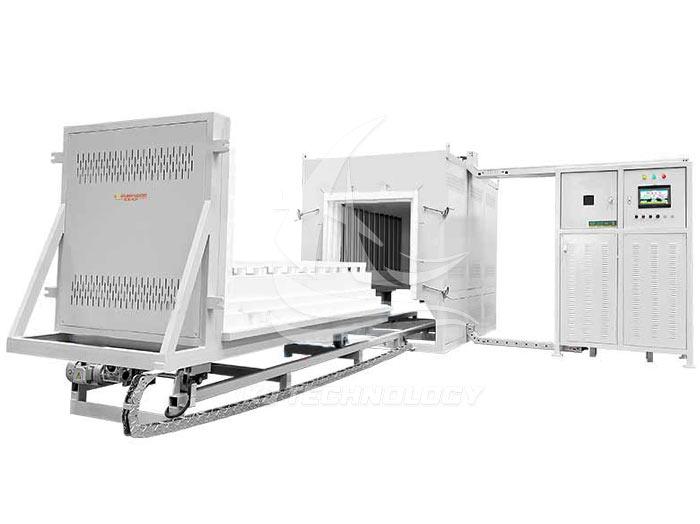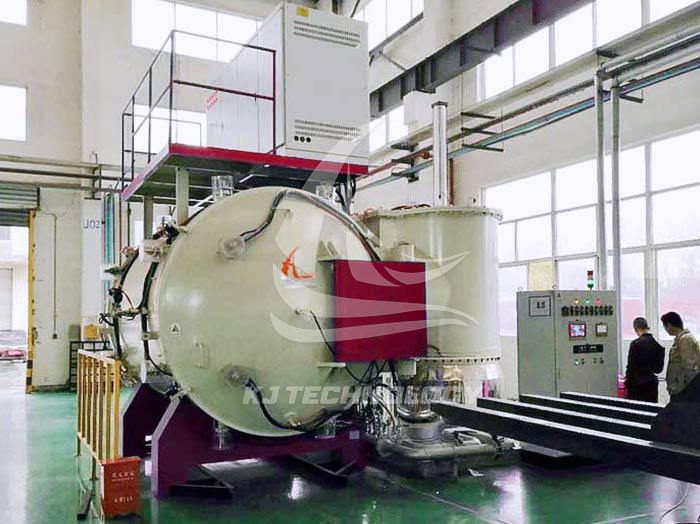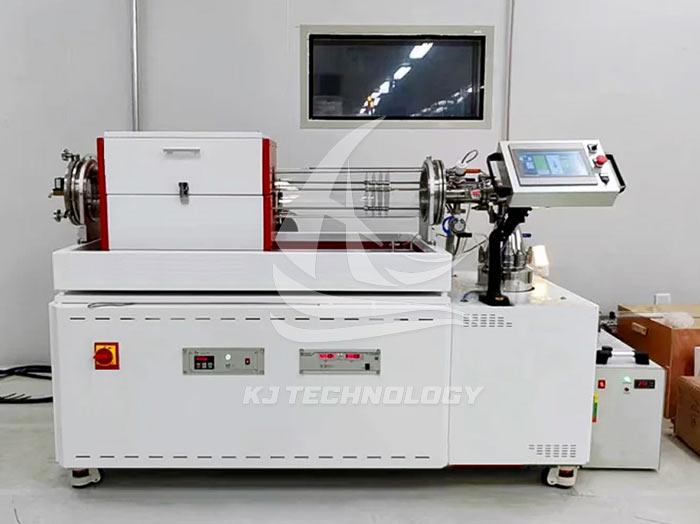What are the advantages of laboratory vacuum furnaces?
 06-26-2025 Author: KJ technology
06-26-2025 Author: KJ technology
Laboratory vacuum furnaces have significant advantages in material research, process development, and high-end manufacturing due to their unique working environment and functional design. The following systematically elaborates on its core values from four dimensions: process control, material properties, experimental efficiency, and safety and environmental protection, combined with specific application scenarios:
1. Advantages of process control
Accurate atmosphere control
Principle: Eliminate interfering gases such as oxygen and water vapor through a vacuum environment, and accurately introduce inert gases (such as N ₂, Ar) or reactive gases (such as H ₂, O ₂).
Application case:
Metal heat treatment: Annealing of titanium alloy is carried out under a vacuum of 10 ⁻ Pa to avoid the formation of oxide layer and improve surface hardness uniformity by 40%.
Semiconductor manufacturing: SiO ₂ thin film is deposited under ultra-high vacuum of 10 ⁻⁶ Pa, reducing impurity content to 0.1 ppm and reducing device leakage current by 90%.
Compatible with ultra-high and low temperatures
Temperature range: usually supports room temperature to 3000 ℃ (such as graphite heating furnace), and can achieve ± 1 ℃ temperature control accuracy.
Comparative advantages:
Traditional muffle furnace: limited to air atmosphere, with an upper temperature limit of about 1600 ℃, and susceptible to oxidation.
Vacuum furnace: capable of processing high-temperature alloys (such as nickel based alloys with a melting point above 1400 ℃) and low-temperature brittle materials (such as ceramic sintering).
2. Material performance improvement
Reduce material defects
Mechanism: Vacuum environment inhibits gas adsorption, pore formation, and grain boundary oxidation.
Data support:
Powder metallurgy: The density of metal powder products produced by vacuum sintering is increased to 99% of the theoretical value, and the strength is increased by 25%.
3D printed metal parts: After vacuum hot isostatic pressing (HIP) treatment, the internal porosity is reduced from 5% to 0.1%, and the fatigue life is extended by 5 times.
Realize special phase transition
Application scenarios:
Nanomaterials: Control the growth temperature of carbon nanotubes under vacuum (700-1200 ℃), with a diameter uniformity of ± 5 nm.
Superconducting material: YBCO superconducting tape is annealed under a vacuum of 10 ⁻⁴ Pa, and the critical current density (Jc) is increased to 10 ⁶ A/cm ².
3. Experimental efficiency and flexibility
Rapid temperature rise and fall and energy conservation
Technical advantages:
Induction heating: The heating rate can reach 100 ℃/min (traditional resistance furnaces have a heating rate of about 10 ℃/min).
Thermal insulation design: Multi layer ceramic fiber insulation reduces heat loss and energy consumption by 30%.
Case: A laboratory used a vacuum induction furnace to shorten the alloy quenching cycle from 8 hours to 2 hours, reducing energy consumption to 1/4 of traditional processes.
Multi functional integration
Optional configuration:
Atmosphere switching: Supports dynamic switching of N ₂/Ar/H ₂/O ₂ multi gases to meet processes such as oxidation, reduction, and carburizing.
Pressure control: The hot press furnace can apply a pressure of 1-100 MPa to achieve densification sintering.
In situ detection: integrated spectrometer or XRD, real-time monitoring of material phase transition (such as graphitization process).
4. Safety and environmental advantages
Non polluting experimental environment
Compared to traditional craftsmanship:
Salt bath furnace: requires the use of toxic cyanide salts, and the cost of waste liquid treatment is high.
Vacuum furnace: fully enclosed operation, no exhaust gas or waste liquid discharge, in compliance with RoHS/REACH standards.
Operational security
Protective design:
Double layer water-cooled chamber: outer wall temperature ≤ 40 ℃ to avoid burns.
Multiple alarms: automatic shutdown and alarm in case of overheating, gas leakage, or abnormal water pressure.
Data: According to statistics from a certain enterprise, the accident rate of experiments using vacuum furnaces has decreased by 80%, and equipment maintenance costs have decreased by 50%.
5. Summary and Recommendation
Summary of Core Advantages
Process precision: precise control of atmosphere, temperature, and pressure.
Breakthrough in material properties: achieving high density, low defects, and special phase transitions.
Efficiency and safety: rapid temperature rise and fall, no pollution, low accident rate.
Applicability recommendation
Required Scene:
Research and development of high-value materials, such as semiconductors and aerospace alloys.
Strict anaerobic/pollution-free environment experiments are required (such as nanomaterials, biomedical materials).
Alternative scenarios:
Low precision and low-cost experiments can use atmosphere furnaces or muffle furnaces, but the yield and performance need to be balanced.
Purchase suggestions
Limited budget: Choose domestic mid-range vacuum furnaces (priced at 500000 to 1 million yuan) to meet basic heat treatment needs.
High end demand: Imported brands such as German PVA TePla and American Centorr Vacuum Industries provide customized functions such as ultra-high vacuum, rapid temperature rise and fall, and in-situ detection, but at a price of over 2 million yuan.
By making reasonable use of the advantages of vacuum furnaces, laboratories can significantly improve research and development efficiency, reduce material waste, and promote breakthroughs in materials science and high-end manufacturing.








